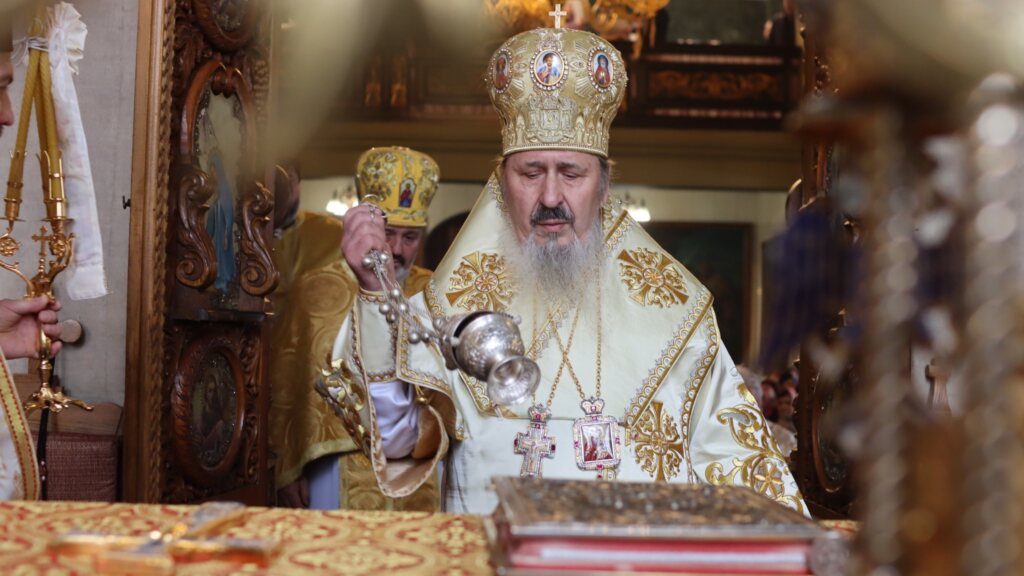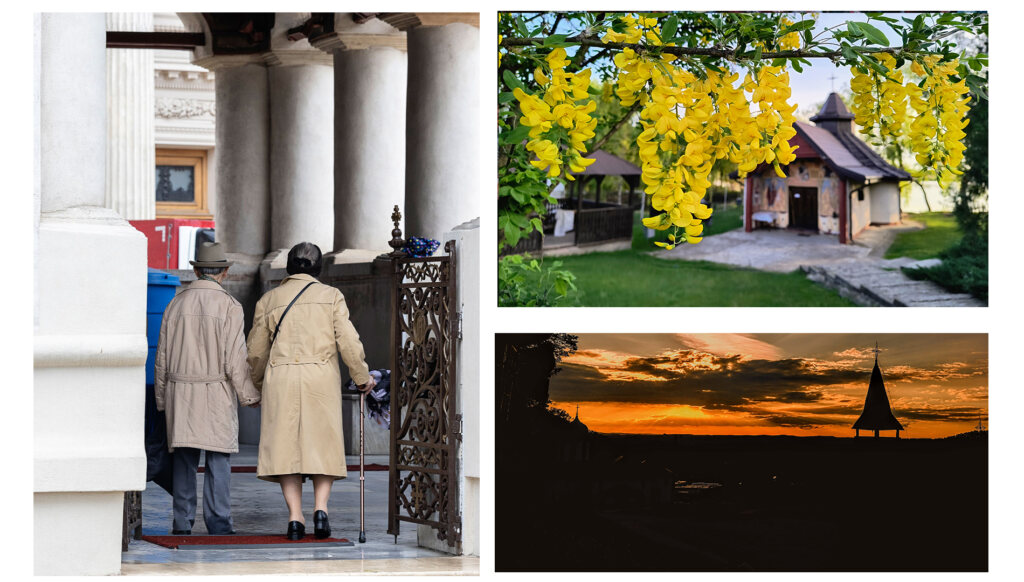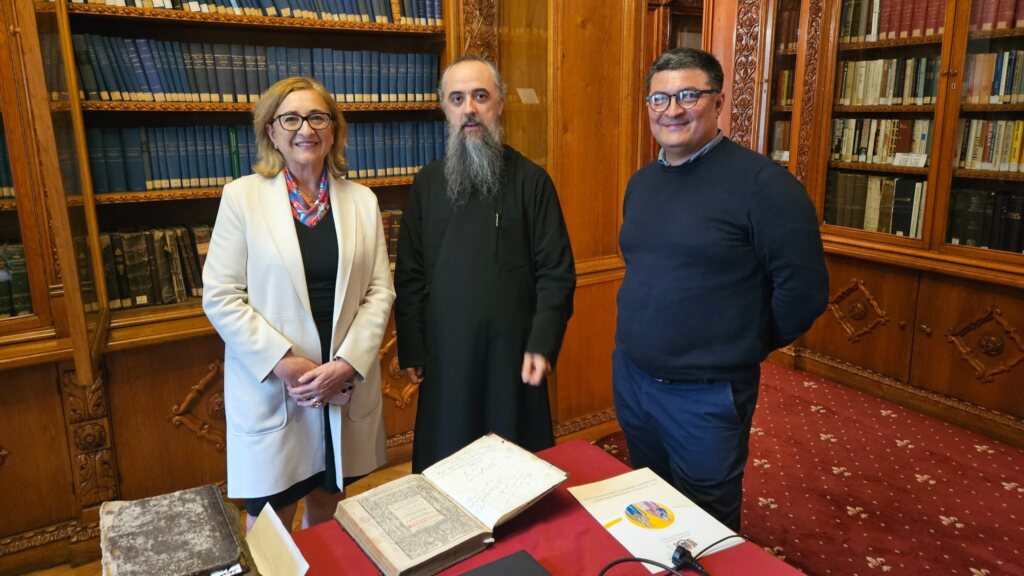Moreover, there has not been even one case of punishment or charge for spoiling the appearance of a cultural monument in Georgia, since such vandalism cases are always detected later.
According to the National Agency for Cultural Heritage Preservation of Georgia, the cultural-historic sites should have a warning that cases of vandalism are punishable by fine.
The agency has assessed the fact as the case of vandalism and addressed special department to study the case. According to the representatives of the supervision service, the damaged frescoes are recoverable.
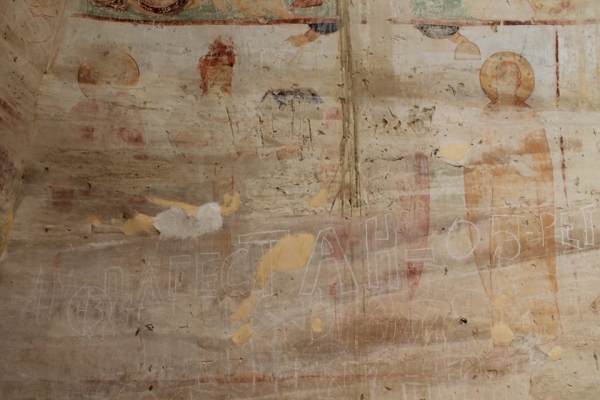
As the agency reports, Davit Gareji complex has been listed among the seven most endangered historic monuments by Europa Nostra that means the organization will start mobilizing funds from donors organization for the rehabilitation works to be carried out.
Davit Gareji complex
David Gareji is a rock-hewn Georgian Orthodox monastery complex located in the Kakheti region of Eastern Georgia, on the half-desert slopes of Mount Gareja, some 60–70 km southeast of Georgia’s capital Tbilisi.
The complex includes hundreds of cells, churches, chapels, refectories and living quarters hollowed out of the rock face. Additionally, the area is also home to protected animal species and evidence of some of the oldest human habitations in the region.
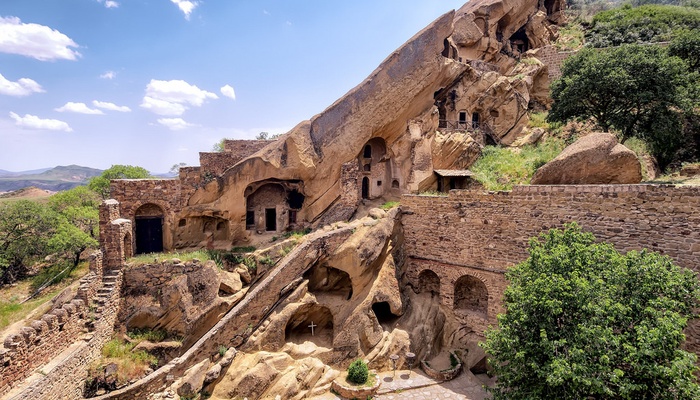
The complex was founded in the 6th century by David (St. David Garejeli), one of the thirteen Assyrian monks who arrived in the country at the same time. His disciples Dodo and Luciane expanded the original lavra and founded two other monasteries known as Dodo’s Rka (literally, “the horn of Dodo”) and Natlismtsemeli (“the Baptist”).
The monastery saw further development under the guidance of the 9th-century Georgian saint Ilarion. The convent was particularly patronized by the Georgian royal and noble families.
The 12th-century Georgian king Demetre I, the author of the famous Georgian hymn Thou Art a Vineyard, even chose David Gareji as a place of his confinement after he abdicated the throne.
Despite the harsh environment, the monastery remained an important center of religious and cultural activity for many centuries; at certain periods the monasteries owned extensive agricultural lands and many villages.
David Gareji frescoes
From the late 11th to the early 13th centuries, the economic and cultural development of David Gareji reached its highest phase, reflecting the general prosperity of the medieval Kingdom of Georgia. New monasteries Udabno, Bertubani and Chichkhituri were built, the old ones were enlarged and re-organized.
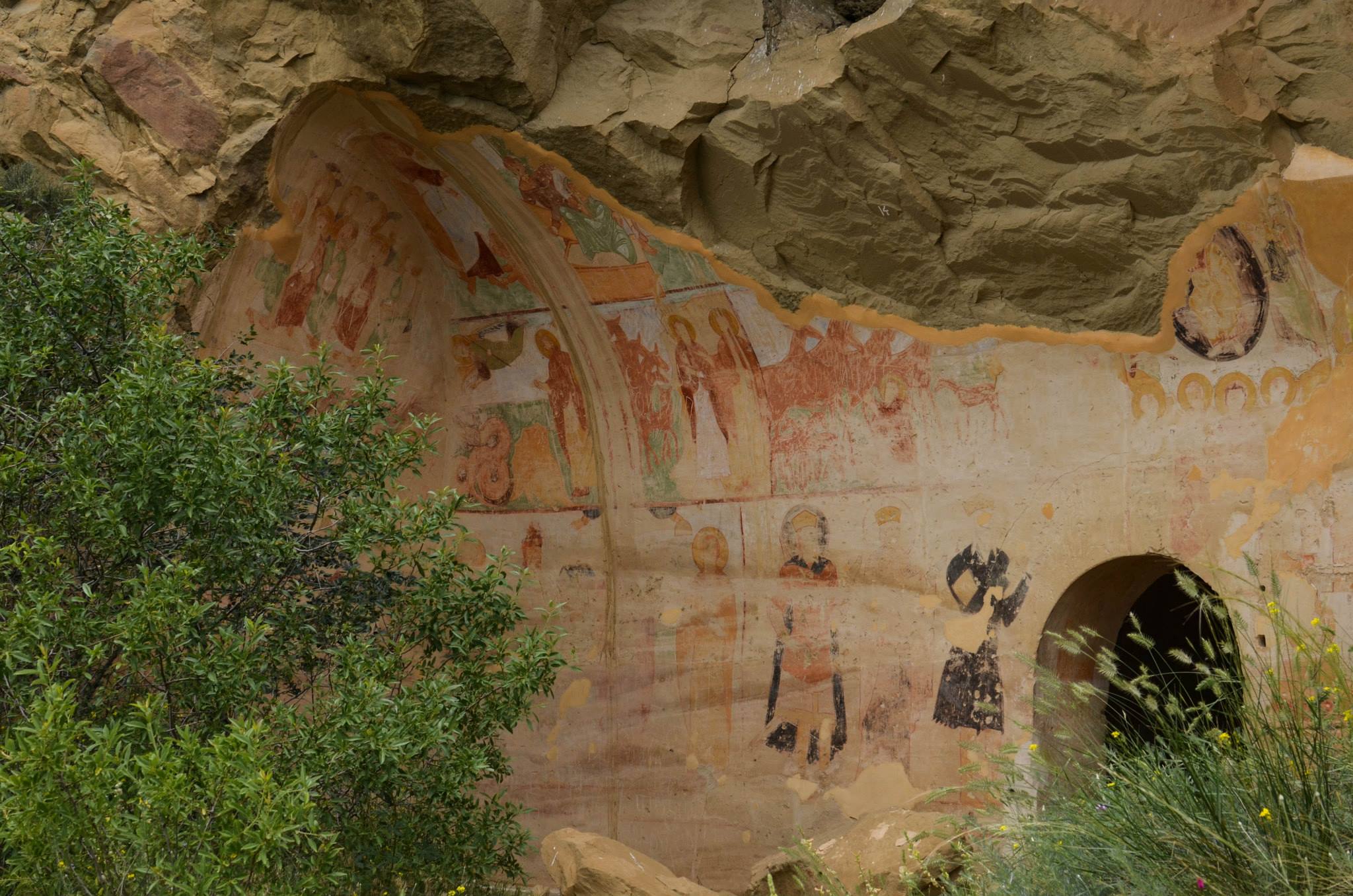
With the downfall of the Georgian monarchy, the monastery suffered a lengthy period of decline and devastation by the Mongol army (1265), but was later restored by the Georgian kings.
It survived the Safavid attack of 1615, when the monks were massacred and the monastery’s unique manuscripts and important works of Georgian art destroyed, to be resurrected under Onopre Machutadze, who was appointed Father Superior of David Gareji in 1690.
After Bolshevik invasion of Georgia in 1921, the monastery was closed down and remained uninhabited.
In the years of the Soviet War in Afghanistan, the monastery’s territory was used as a training ground for the Soviet military that inflicted damage to the unique cycle of murals in the monastery.
After Georgia gaining back its independence from Soviet Russia in 1991, the monastery life in David Gareja was revived. However, in 1996, the Georgian defense ministry resumed military exercises in the area, leading to renewed public protests.
Photo credit: Georgian Journal



